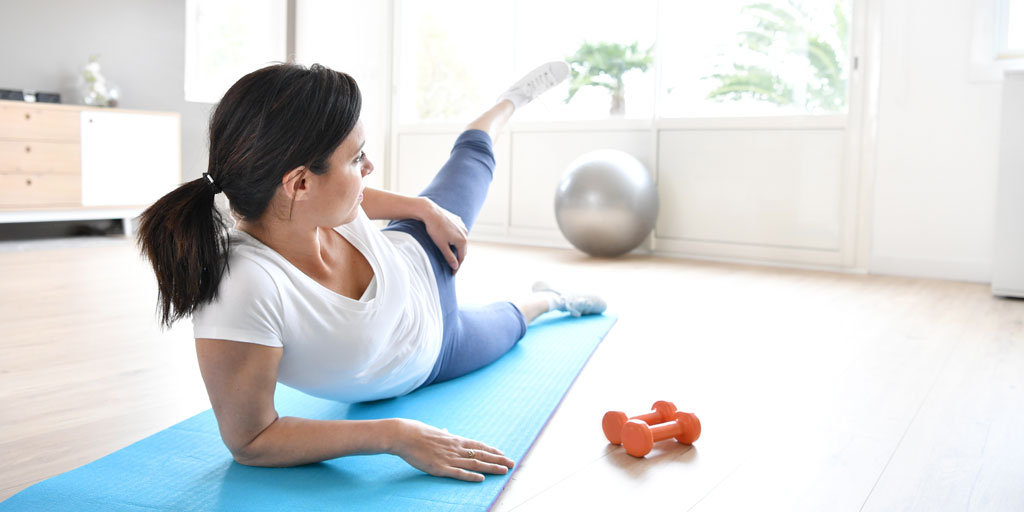Pelvic Floor Physical Therapy
What is Pelvic Floor Physical Therapy?
Pelvic floor physical therapy is a type of non-invasive rehabilitation to address and treat many common women’s health conditions. Dr. Russo has a team of physical therapists at Athletico Physical Therapy who work with her patients. Read on, and if you suffer from any of these conditions and would like to explore pelvic floor physical therapy, we can help. By using biofeedback and gentle physical therapy manipulation techniques, pelvic floor physical therapy treats issues such as certain forms of incontinence and vaginal pain that can inhibit sexual function.
What is Biofeedback?
Biofeedback is when electronic monitoring of a normally automatic bodily function is used to train someone to acquire voluntary control of that function. Biofeedback is used in pelvic floor physical therapy to treat incontinence issues. Physical therapists place monitoring sensors inside the vaginal wall. These sensors monitor your normal functions. For example, how your body initiates or responds to the need for urination. The sensors will monitor muscle tone through voluntary and involuntary contractions as well as pelvic floor strength.
Conditions Treated with Pelvic Floor Physical Therapy
Some of the most common issues women struggle with are treated effectively with pelvic floor physical therapy. Especially for women who want to avoid surgery due to the invasive nature, cost and recovery, pelvic floor physical therapy is a viable alternative.
Pelvic Floor Physical Therapy is Used to Treat these 4 Common Women’s Health Conditions
- Stress Urinary Incontinence: SUI is a term used to describe leaking urine regularly when you perform a physical activity: running, jumping or lifting, for example. Stress Urinary Incontinence affects thousands of women during and after menopause due to the drop in estrogen production. It puts a real damper on quality of life.
- Urge Incontinence: This type of incontinence also occurs as estrogen levels decrease for women in and after menopause. If you have an increased urge to go to the bathroom – even if you just went – or go to the bathroom often “just in case,” you may have Urge Incontinence.
- Mixed Incontinence: Mixed Incontinence describes a condition whereby women have a combination of both Stress Urinary Incontinence and Urge Incontinence.
- Vaginal Pain: Vaginal pain can occur at any age. Childbirth, trauma, medical procedures and treatments and changes in vaginal health brought about by menopause: these are all reasons women experience frequent vaginal pain. It’s much more than just a pain, though. Ongoing vaginal pain disrupts intimate relationships. It occurs during enjoyable activities like tennis or exercise. For these reasons, vaginal pain is a major quality of life culprit and needs to be addressed. However, many people don’t realize vaginal pain makes the list of pelvic floor physical therapy conditions. They’ve given up hope of recovery, believing only prescription drugs with side effects or surgical intervention were their only means of relief – and at a cost. By the contrary, pelvic floor physical therapy treats vaginal pain through biofeedback measures and gentle, trained manipulation.
Here are 10 interventions commonly instituted in pelvic floor physical therapy to treat the above conditions:
- Increasing strength, stability and endurance of the core, transverse abdominals, hips muscles and pelvic floor
- Increasing synergy and pattern of muscle firing between the pelvic floor and core
- Use of the biofeedback for pelvic floor training and re-education
- Performing strengthening exercises in functional and dynamic positions
- Improving posture/positions
- Dietary modifications
- Bladder diary and log
- Exercise/walking/mobility program
- Functional activities
- Home exercise program and instructions
If you suffer from incontinence or vaginal pain, consult us today to see if pelvic floor physical therapy is right for you. Isn’t it time to reclaim your life?

